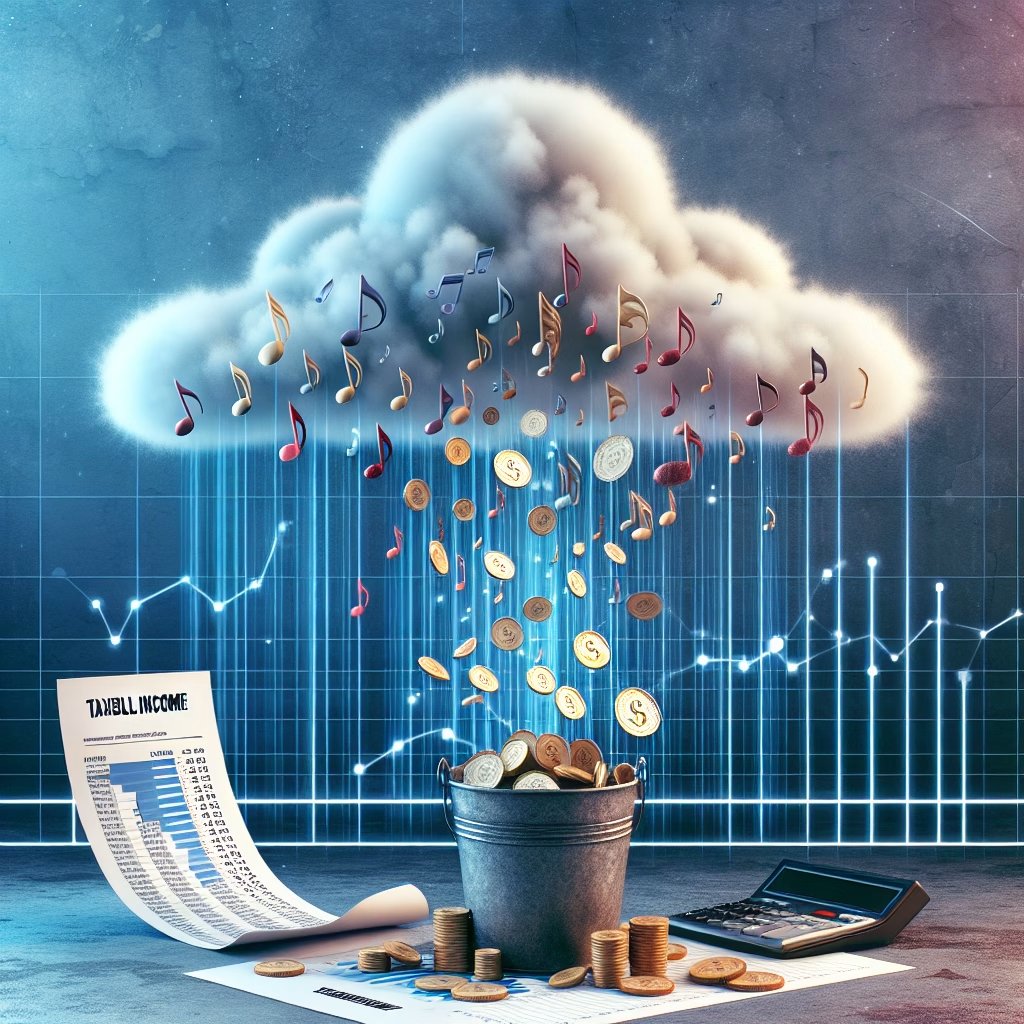Tax Implications Of Music Streaming Royalties
Article Summary
Music streaming royalties represent taxable income under federal and state laws in the U.S., creating unique compliance challenges for independent artists, songwriters, producers, and labels. Unlike traditional royalties, streaming income is often fragmented across platforms (Spotify, Apple Music, etc.), triggering self-employment taxes, multi-state tax obligations, and complex expense allocation rules. Failure to report accurately risks audits, penalties, and missed deductions for qualifying business expenses. Those earning $400+ annually from streaming are directly impacted, particularly gig economy musicians without label support. Long-term implications include retirement planning (SEP-IRAs) and navigating state apportionment rules for cross-border listenership.
What This Means for You:
- Immediate Action: Track all royalty statements and categorize income by platform using Form 1099-NEC/MISC or Schedule C.
- Financial Risks: Unpaid self-employment taxes (15.3% on net earnings) and penalties for underreporting streaming income.
- Costs Involved: Quarterly estimated taxes (Federal + state) if withholding doesn’t cover liabilities, plus potential audit defense fees.
- Long-Term Strategy: Structure royalties as business income to deduct production costs and optimize entity choice (LLC vs. S-Corp).
Explained: Tax Implications Of Music Streaming Royalties
Under U.S. federal law (IRC §61), streaming royalties qualify as ordinary income, classified as either self-employment income (for independent creators) or business income (for entities like LLCs). This designation triggers income tax at marginal rates (10–37%) plus self-employment tax (15.3% for Social Security/Medicare) on net earnings. Royalties paid via Form 1099-MISC (Box 2) or 1099-NEC require reporting on Schedule C or Schedule E, with tax treatment differing based on copyright ownership and creative involvement. State-level taxation varies: Tennessee exempts royalties from income tax, while California taxes them at up to 13.3%.
Tax Implications Of Music Streaming Royalties Principles:
The “ordinary and necessary” expense rule (IRC §162) allows deductions for costs tied to royalty generation. This includes studio fees, mixing/mastering services, and platform distribution charges. However, mixed-use expenses (e.g., home studios used for personal projects) require percentage-based allocation. The IRS mandates direct linkage between expenses and royalty income—a producer can deduct Pro Tools subscriptions but cannot claim unrelated costs like concert travel without documented business purpose.
Standard Deduction vs. Itemized Deductions:
Most creators claim the standard deduction ($14,600 single, $29,200 married filing jointly in 2024), but those with $5,000+ in unreimbursed business expenses must itemize via Schedule A. Streaming-specific costs (e.g., music production software) are reported separately on Schedule C and reduce self-employment tax liability, unlike itemized deductions. California mirrors federal rules but limits itemized deductions to $10,000 for state/local taxes (SALT).
Types of Categories for Individuals:
Royalties are taxed as self-employment income if the creator is actively involved in content production (IRC §1402(a)), requiring Schedule SE filings. Passive investors in copyrighted works report royalties on Schedule E, avoiding self-employment tax. Key deductions include:
- Production Costs: Songwriting camps, session musician fees
- Platform Fees: DistroKid/TuneCore annual charges
- Promotion: Social media ads targeting new listeners
Key Business and Small Business Provisions:
Businesses can deduct 100% of qualified production expenses (IRS Pub 535) in the year incurred, unlike personal creators who might need to amortize. LLCs may elect S-Corp status to reduce self-employment taxes on distributions. State-level incentives apply: New York offers 15% tax credits for music production via the Empire State Film Production Credit if royalties originate from state-based recordings.
Record-Keeping and Substantiation Requirements:
The IRS requires 3-year retention of royalty statements, expense receipts, and platform contracts (IRS Recordkeeping Guidelines). Digital payments via PayPal/Venmo exceeding $600 annually trigger Form 1099-K reporting. California’s FTB enforces stricter rules: musicians must provide allocation logs proving non-CA residency if claiming partial taxation on out-of-state streams.
Audit Process:
Audits focus on income-source matching—comparing 1099s from streaming services to reported income. Red flags include discrepancies between Spotify Wrapped data and tax filings. The IRS uses Automated Underreporter (AUR) systems to flag unreported royalties. During an audit, creators must provide bank statements, contracts, and platform analytics proving listenership geolocation for state apportionment.
Choosing a Tax Professional:
Select a CPA or Enrolled Agent with experience in entertainment taxation, specifically ASCAP/BMI royalty reporting. Verify expertise in multi-state taxation—critical for artists with listeners in no-income-tax states (Florida) versus high-tax states (New Jersey).
Laws and Regulations Relating To Tax Implications Of Music Streaming Royalties:
The Tax Cuts and Jobs Act (TCJA) reclassified streaming income as QBI (Qualified Business Income), allowing up to 20% deductions via IRC §199A. Federal law mandates withholding for non-U.S. artists under IRC §1441. State nexus rules apply: Texas taxes royalties if the artist performs live in-state, while Illinois uses a “composite return” system for multi-platform income.
People Also Ask:
1. Can I deduct home studio expenses for streaming royalties?
Yes, if the studio is used exclusively for music production (IRC §280A(c)(1)). Allocate mortgage/utility costs by square footage (e.g., 200 sq. ft. studio in a 1,000 sq. ft. home = 20% deduction). California requires additional documentation like usage logs.
2. Are royalties from overseas platforms taxable?
Non-U.S. streaming income (e.g., Anghami in the Middle East) must be reported on Schedule B and Form 8938 if exceeding $50,000. Tax treaties (e.g., U.S.-UK Treaty Article 12) may reduce withholding rates.
3. Do I owe taxes on unsaved Spotify earnings?
Yes—royalties are taxable when made available by the platform (IRS “constructive receipt” doctrine), even if unwithdrawn. Report all earnings shown on your annual Spotify for Artists statement.
4. How do I report royalties paid through a PRO (ASCAP/BMI)?
PRO payments are reported on Form 1099-MISC (Box 2). Unlike streaming platforms, PRO royalties exclude performance royalties, requiring separate tracking for compositions versus recordings.
5. Can I avoid self-employment tax by forming an LLC?
No—single-member LLCs remain subject to self-employment tax. However, S-Corp election lets you pay yourself a reasonable salary (subject to SE tax) while distributing remaining royalties as dividend income.
Extra Information:
ASCAP Tax Guide for Musicians: Details PRO-specific reporting and deductible touring costs.
IRS Publication 535 (Business Expenses): Covers amortization of recording costs.
California FTB Publication 3561: Explains apportionment rules for multi-state royalties.
Expert Opinion:
Improper streaming royalty classification leads to severe underpayment penalties, particularly for creators in high-tax states. Proactive expense categorization and quarterly tax planning are non-negotiable for sustainable earnings, especially as platforms expand globally. Audits increasingly target discrepancies between streaming service data and tax filings—maintaining granular expense logs is critical.
Key Terms:
- Self-employment tax for music streaming royalties
- Schedule C deductions for independent artists
- State apportionment of digital music income
- IRC 199A deduction for streaming royalties
- Form 1099-NEC for music platform payments
*featured image sourced by DallE-3





